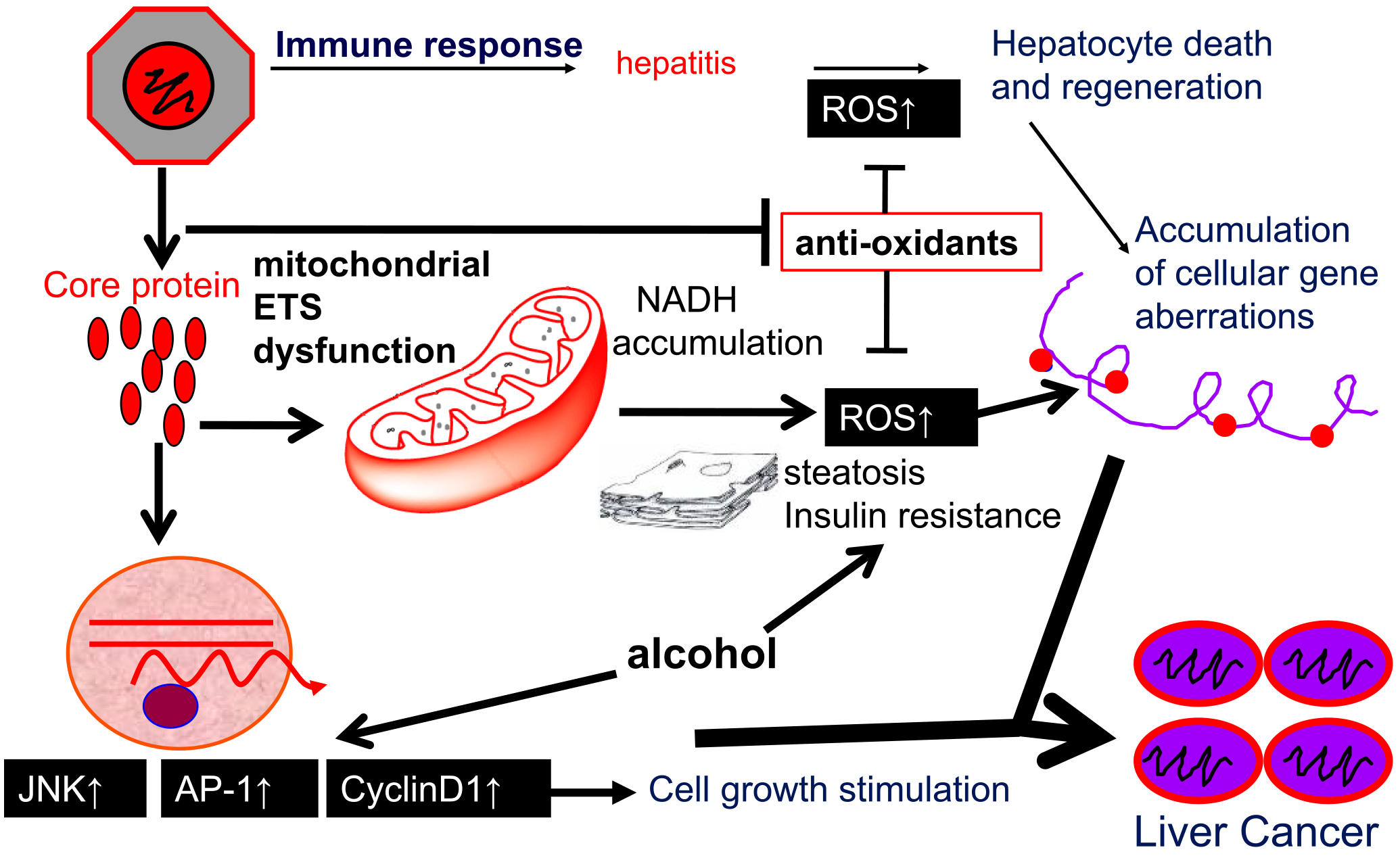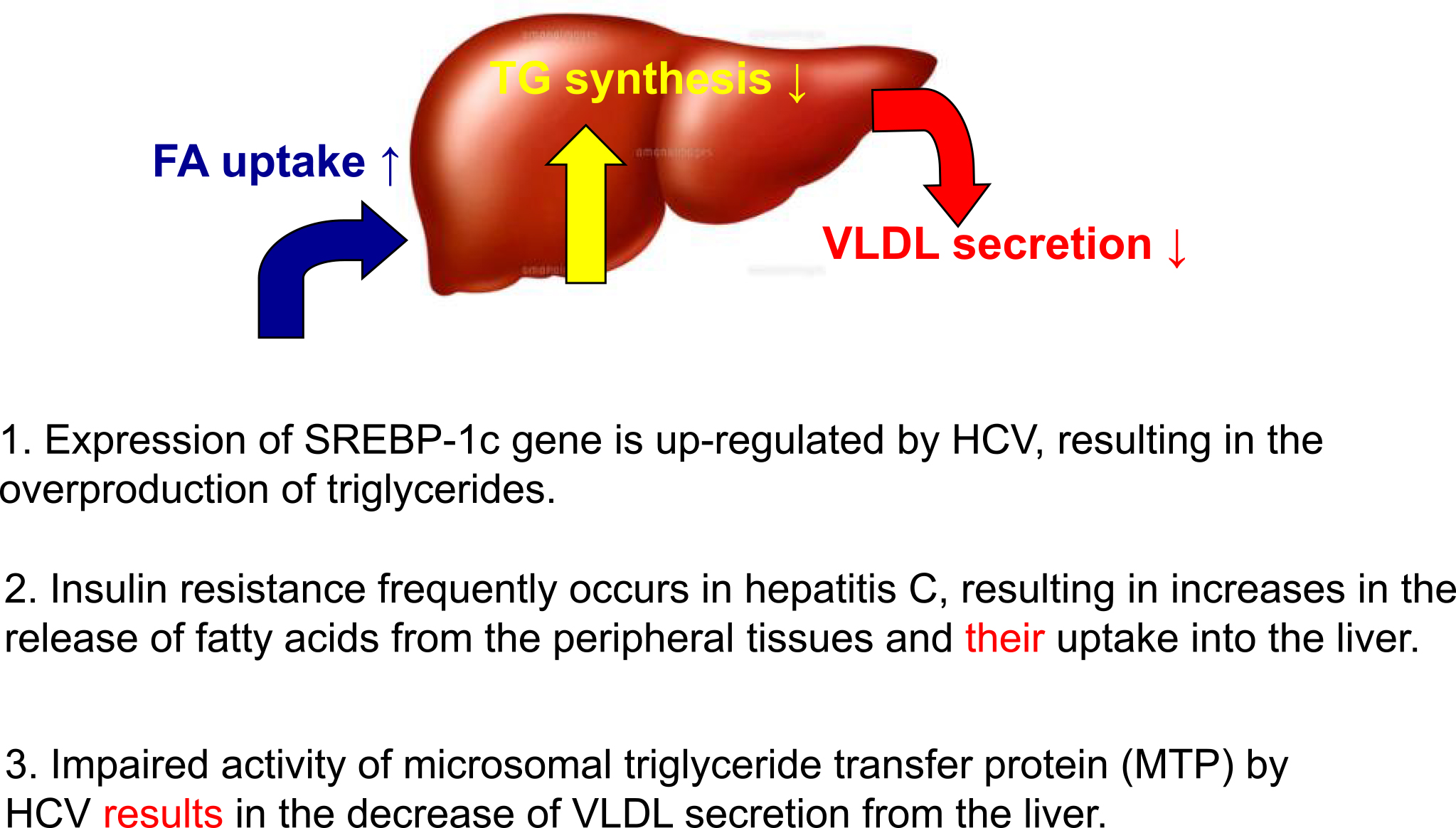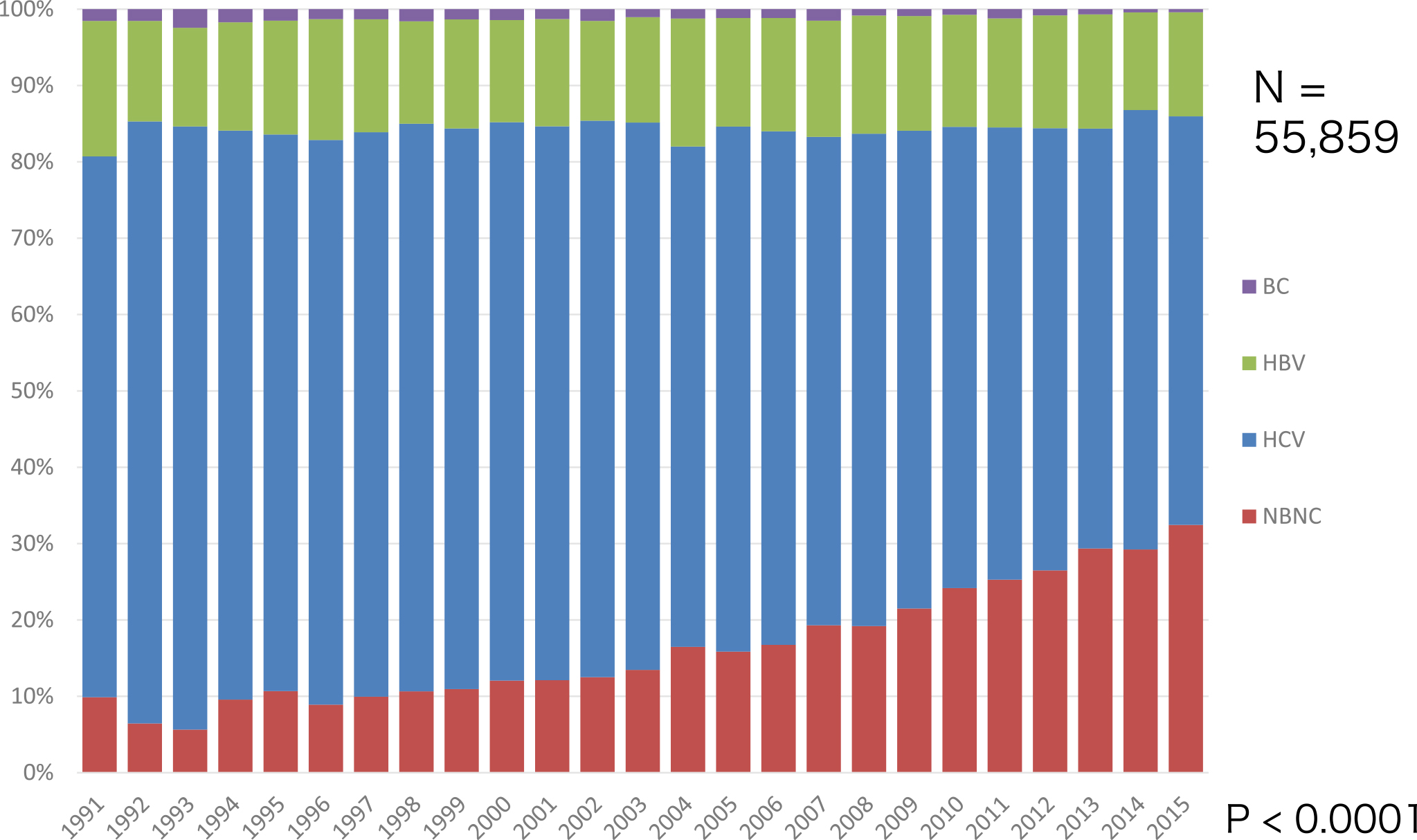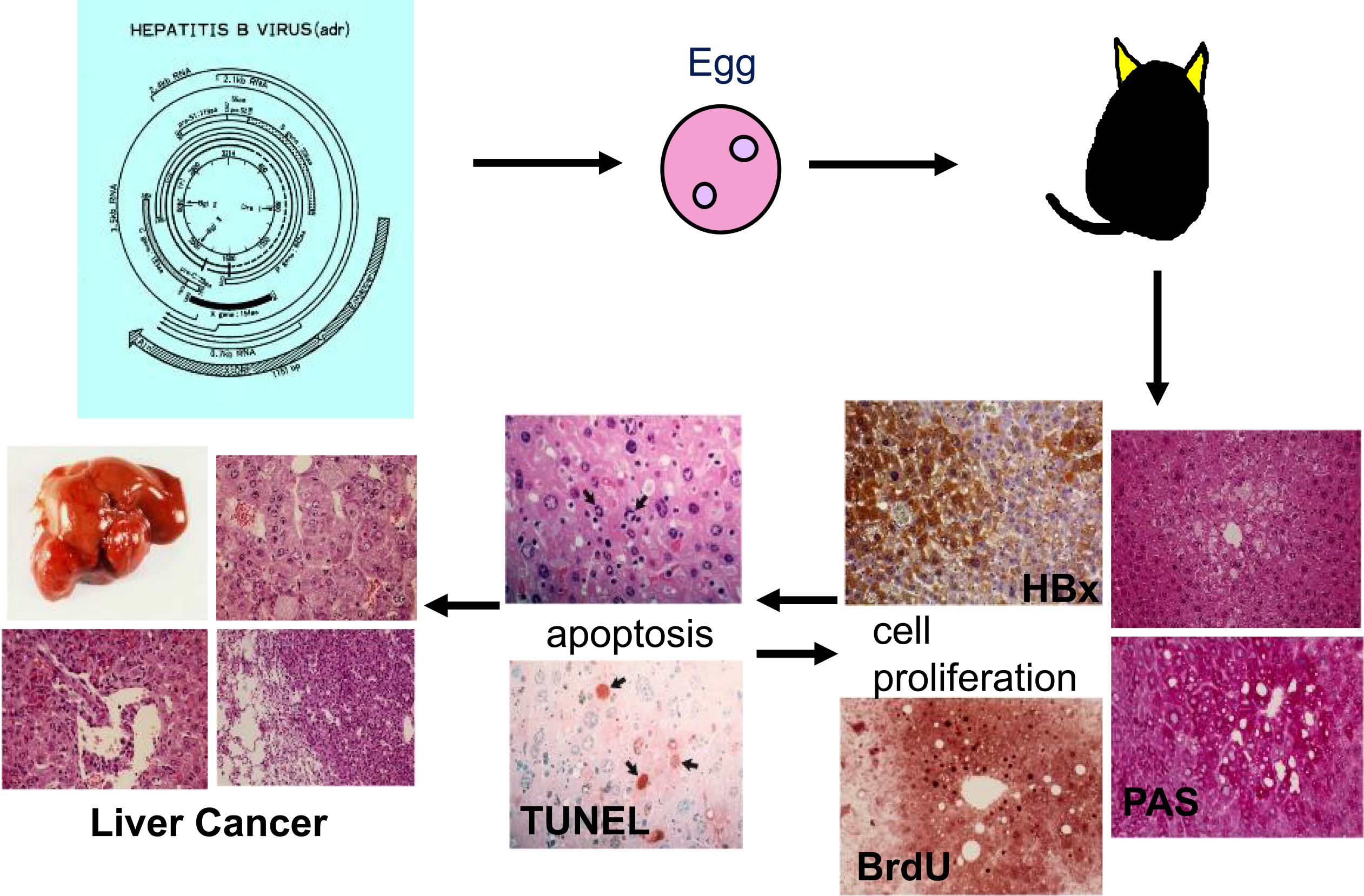Figure 3. Molecular mechanism of liver carcinogenesis based on a hepatitis C mouse model.
Induction of oxidative stress together with hepatic steatosis by hepatitis C virus core protein plays a pivotal role in the development of liver cancer. Alterations in cellular gene expressions, such as TNF-alpha, and those in the intracellular signaling pathways including JNK are co-accelerators of hepatocarcinogenesis in HCV infection.
ROS, reactive oxygen species; ETS, electron transfer system; TNF-alpha, tumor necrosis factor-alpha; JNK, c-Jun N-terminal kinase; AP-1, activator protein-1.
From: The Way to Decoding Pathogenesis and Conquering of National Afflictions, Viral Hepatitis and Liver Cancer

Figure 4. Mechanism of hepatic steatosis in hepatitis C.
Hepatitis C virus (HCV) induces steatosis in the liver through the three pathways of lipid metabolism. First, a transcription factor, SREBP-1c, is upregulated by HCV core protein, resulting in an increased production of triglycerides. Second, HCV core protein induces insulin resistance, leading to an increase in the peripheral release and hepatic uptake of fatty acids. Lastly, the HCV core protein suppresses the activity of MTP, inhibiting the secretion of VLDL from the liver, yielding an increase of triglycerides in the liver. Thus, the involvement of three pathways easily leads to the development of hepatic steatosis in patients with hepatitis C.
TG, triglyceride; FA, fatty acid; SREBP-1c, sterol regulatory element binding protein; MTP, microsomal triglyceride transfer protein; VLDL, very-low-density protein.
From: The Way to Decoding Pathogenesis and Conquering of National Afflictions, Viral Hepatitis and Liver Cancer




